US Climate Reference Network at NOAA’s Air Resources Laboratory
The Atmospheric Turbulence and Diffusion Division (ATDD) celebrated the Air Resources Laboratory’s (ARL) 75th anniversary with an Open House that brought together NOAA leadership, local policy-makers, and ARL partners. One of the projects introduced was the U.S. Climate Reference Network, or USCRN. This is a project ATDD has been involved with, along with our partners from NOAA’s National Centers for Environmental Information (NCEI), since its initial design in the late 1990s and implementation which began in 2002.
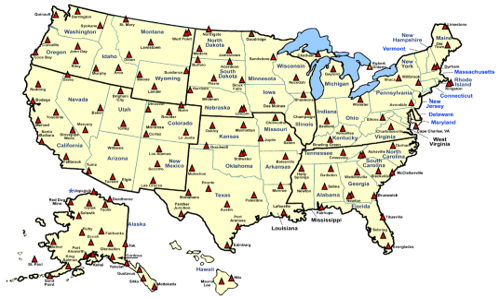
Location of the 141 USCRN stations across the United States and one test site in Canada.
The U.S. Climate Reference Network is a network of 141 climate monitoring stations across the contiguous U.S, Alaska, and Hawaii. The goal is to provide a pristine and accurate series of climate observations used to monitor trends and support research. ATDD and NCEI have collaborated on the USCRN since its beginnings where ATDD designed the measurement systems, built the sites, and maintains the stations and instruments, while NCEI manages and maintains the data from the network by quality controlling, archiving, and providing public access to the data.
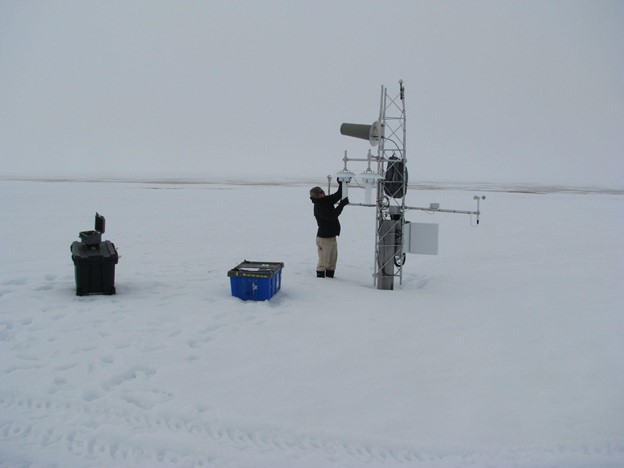
Technician Tony Hamby during an annual maintenance visit in Utqiaġvik, AK.
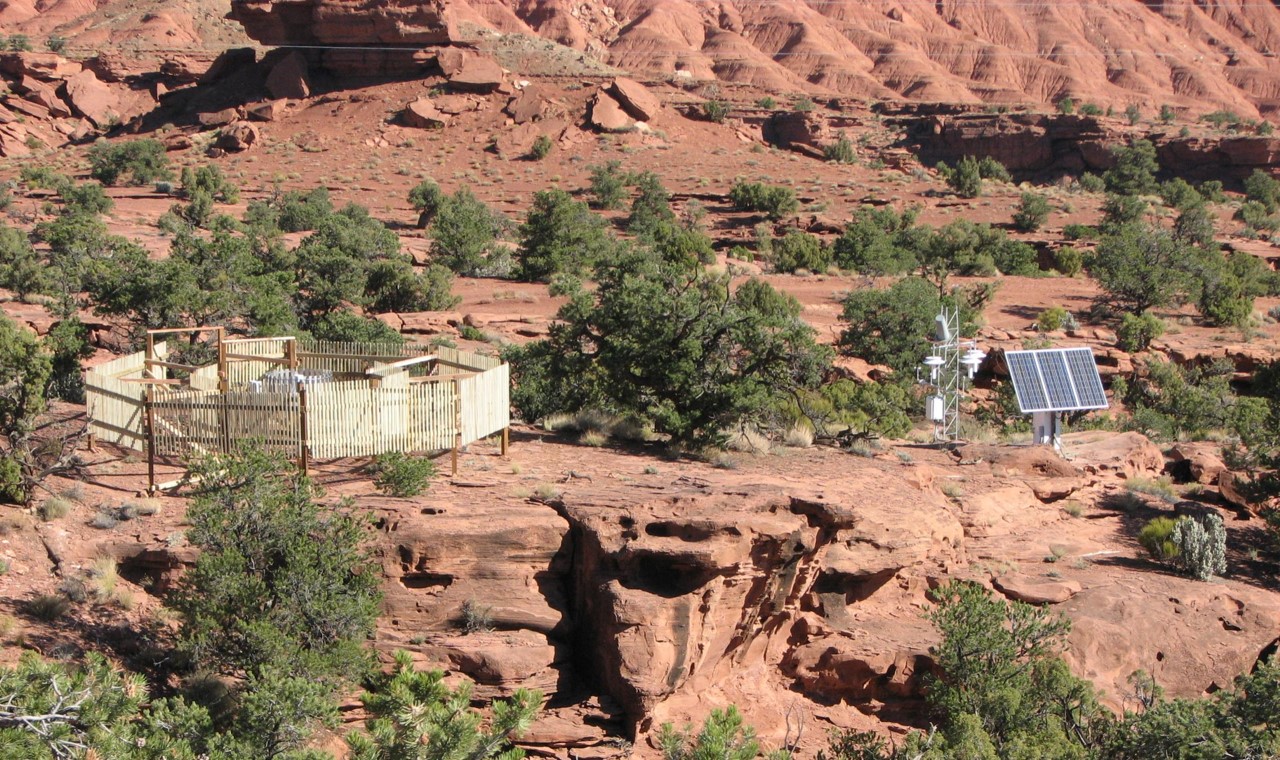
USCRN station located in Capitol Reef National Park in Torrey, UT.
ATDD has a small team of eight technicians and engineers responsible for annual maintenance visits to each station. As one might imagine, some of the sites are in areas where the weather can be harsh. To help mitigate some of those issues, the teams plan trips to avoid extreme weather as much as possible by going to hot areas, like desert locations, in winter and cold area stations, such as the Alaska sites, in summer. Each trip requires a lot of preparation as they calibrate new sensors beforehand and pack everything that might be needed. Most of the sites are in remote locations, and some are only accessible via boat or plane, so it is not always possible to get something they don’t have if it’s forgotten or an unexpected issue arises.
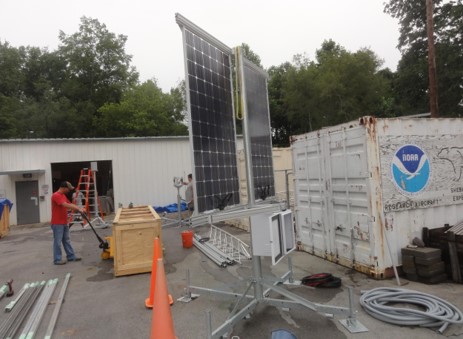
Preparation for the installation of a new site in Alaska. Josh Blackwell works to pack up everything that might be necessary including tools, sensors, power sources and safety gear. Each station is fully built and tested at ATDD then disassembled and placed directly into shipping crates to ensure the team has everything they need and that the equipment is fully functional prior to deployment.
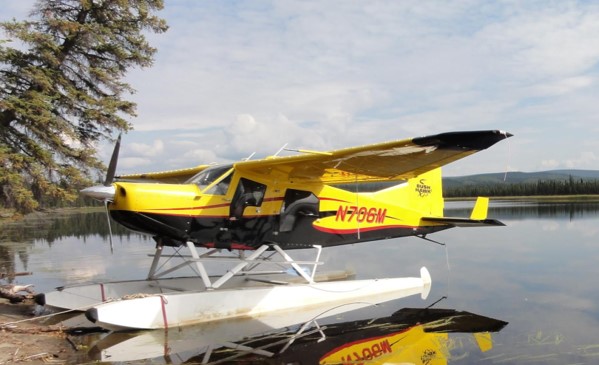
USCRN stations are located in fairly remote areas. This requires some more unusual methods of transportation. This propeller plane took the team to Nowitna National Wildlife Refuge in Ruby, AK.
During every visit, teams switch out one of three platinum resistance thermometers, calibrate and clean out rain gauges, swap out the solar radiation sensor, anemometer, replace failed soil sensors, update the data logger as required each year, and clear out all the vegetation that may have grown up over time. Sometimes they have to remove bird or insect nests that could interfere with measurements. They also snap pictures of the locations to document how the area has changed. If trees begin growing too close to the sensors, they would need to be trimmed back in order to ensure the integrity of the climate record. New construction too close to a station could also affect measurements, so would need to be evaluated.
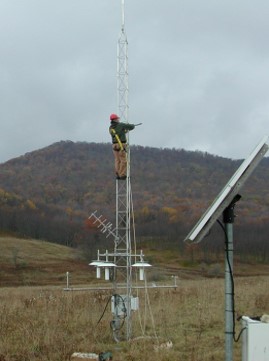
Annual maintenance requires climbing the towers, here we see Climate Reference Network Lead Brent French working on a wind powered generator at the site in Elkins, WV.
Each site also has a local site host. This might be someone who is part of the entity responsible for the land, such as someone who works for a national park, or possibly a state climatologist. Local hosts help out with small resets and replacements throughout the year, and are invaluable to the maintenance of the USCRN.
Once the team returns, they update the metadata from the site, complete paperwork and forward that information on to NCEI. Then the process begins again with calibration of new sensors for the next station visit. Despite the sometimes harsh conditions and heavy travel schedule, ATDD staff are dedicated to their work with the majority of team members being with ARL for 15 years or more.

